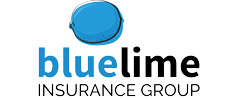To minimize the adverse consequences of accidental loss, maintain continuity of the association, and assist members in protecting their most important asset – their homes, it is necessary to adopt a comprehensive risk management program.
To accomplish this, governing boards must work to meet a broad range of lender and legal requirements as trustee of the association, all while evaluating the risk of loss and the funding for such loss.
5 Simple Steps
In order to establish an effective risk management program for your homeowners association, it is necessary to implement the five steps below:
- Identify Exposures to Loss (liability, net income, property, and personal).
- Evaluate the Use of Risk Financing, including purchasing insurance, self-funding for small losses, and funding for deductibles.
- Evaluate the Use of Risk Control, which may minimize or eliminate losses.
- Implement Risk Control and Risk Financing by working with a range of recognized association professionals, such as the community manager, CPA, insurance agent, and legal counsel.
- Evaluate these steps by monitoring and improving, if necessary, by working in the same manner used to review operational functions on a regular basis.
Review Requirements
When obtaining insurance, the board should regularly review insurance requirements based on:
- governance requirements (CC&Rs, internal policies, declaration, related guidelines, etc.)
- certain local, state, and federal laws, such as building ordinances, workers compensation, and flood insurance
- indemnitor/indemnitee obligations
- lender standards
When working with association professionals to develop a risk management and insurance program for your HOA, the governing board will aim to minimize adverse financial consequences related to accidental loss while helping homeowners protect their investments.
A comprehensive risk management program should be based on the risk management principles and requirements outlined above. By coordinating a risk management program in preparation of the association’s annual budget and reviewing on a regular basis, as well as conducting annual insurance loss runs, your association can reduce risk and protect the association and its members.





